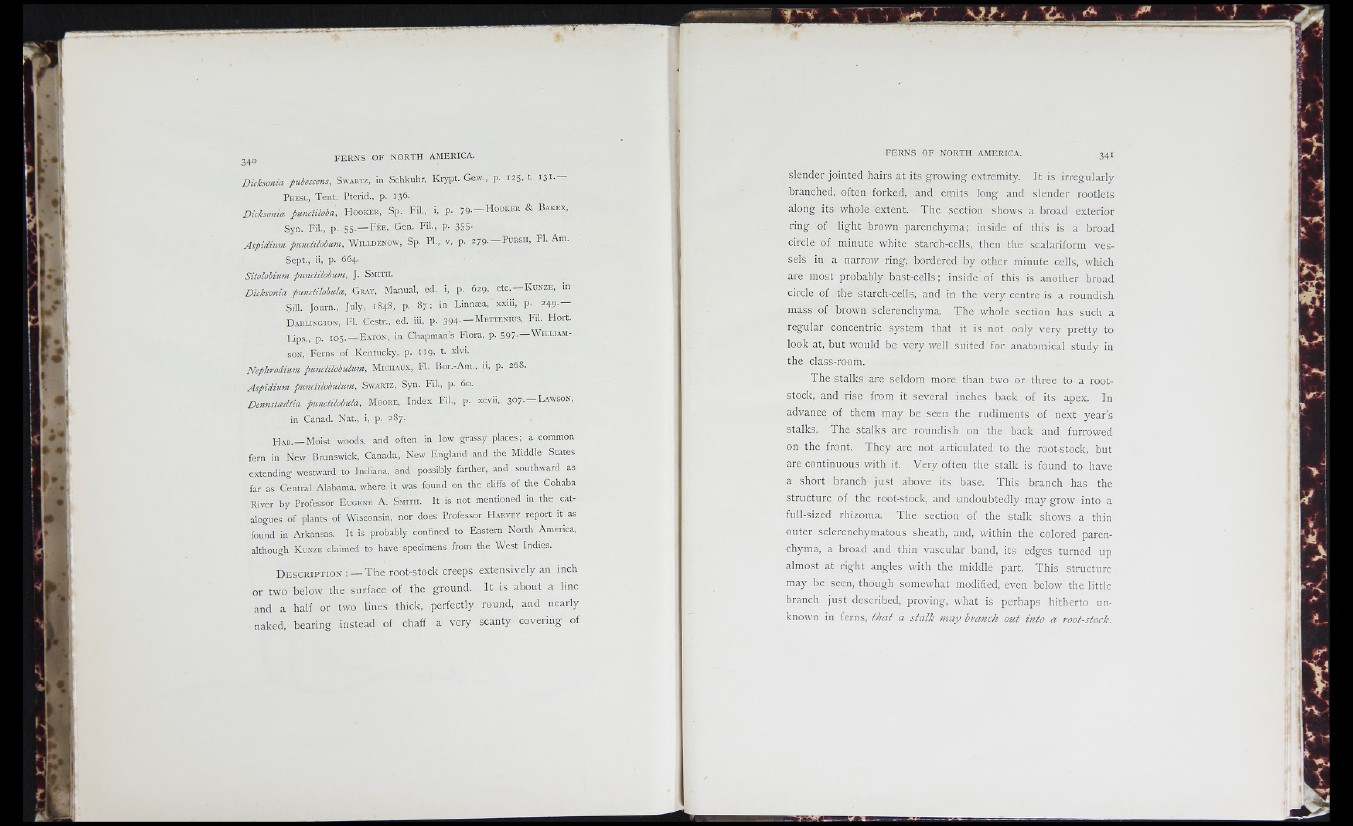
iri
I
F ■ 1
0 *
| i *>
I E .
Dicksonia, pubescens, S w a e t z , in Schkuhr, Krypt. Gew., p. 1 2 5 . I3 '-
P r e s l , Tent. Pterid., p. 136-
Dicksonia punchloba. H o o k e r , Sp. Fil., i. p. 7 9 . - H o o k e r & B a k e r ,
Syn. Fil., p. 55-— F é e , Gen. Fil., p. 35 5-
Aspidium punctilobum, W i l l d e k o w , Sp. Ph, v, p. 279. — P u r s h , FI. Am.
Sept., ii, p. 664.
Siiolobiicm punciilobicm, J. S m i t h .
Dicksonia pnmtilobula, G r .av , Manual, ed. i, p. 629, etc.— K u n z e , in
Sill. Journ., July, 1848, p. 8 7 ; in Linnæa, xxiii, p. 249.—
D .a r l in g t o n , Fi. Cestr., ed. iii, p. 394.- M e t t e n iu s , Fil. Hort.
Lips., p. 10 5 .— E .a t o n , in Chapman's Flora, p. 597.— W il l ia m s
o n , Ferns of Kentucky, p. 119 , t- xlvi.
Nephrodium pmutilobulum, Aîic h a u x , Fi. Bor.-Am., ii, p . 2 6 S .
Aspidium pundilobulum, S w a r t z , S y n . Fil., p . 60.
Dennstccdtia punctilobnla, M o o r e , Index Fil., p. xcvii, 307. — L a w s o n ,
in Canad. Nat., i, p. 287.
H a b ,— Moist woods, and often in low grassy places; a common
fern in New Brunswick, Canada, New England and the Middle States
extending westward to Indiana, and possibly farther, and southward as
far as Central Alabama, where it was found on the cliffs of the Cohaba
River by Professor E u g e n e A. S m it h . It is not mentioned in the catalogues
of plants of Wisconsin, nor does Professor H a r v e y report it as
found in Arkansas. It is probably confined to Eastern North America,
although K u n z e claimed to have specimens from the West Indies.
D e s c r i p t io n : — The root-stock creeps extensively an inch
or two below the surface of the ground. It is about a line
and a half or two lines thick, perfectly round, and nearly
naked, bearing instead of chaff a very scanty covering of
slender jointed hairs at its growing extremity. It is irregularly
branched, often forked, and emits long and slender rootlets
along its whole extent. The section shows a broad exterior
ring of light brown parenchyma; inside of this is a broad
circle of minute white starch-cells, then the scalariform vessels
in a narrow ring, bordered by other minute cells, wdiich
are most probably bast-cells ; inside of this is another broad
circle of the starch-cells, and in the very centre is a roundish
mass of brown sclerenchyma. The whole section has such a
regular concentric system that it is not only very pretty to
look at, but would be very well suited for anatomical study in
the class-room.
The stalks are seldom more than two or three to a root-
stock, and rise from it several inches back of its apex. In
advance of them may be seen the rudiments of next year’s
stalks. The stalks arc roundish on the back and furrowed
on the front. They are not articulated to the root-stock, but
are continuous with it. ’Very often the stalk is found to have
a short branch just above its base. This branch has the
structure of the root-stock, and undoubtedly may grow into a
full-sized rhizoma. The section of the stalk shows a thin
outer sclerenchymatous sheath, and, within the colored parenchyma,
a broad and thin vascular band, its edges turned up
almost at right angles with the middle part. This structure
may be seen, though somewhat modified, even below the little
branch just described, proving, what is perhaps hitherto unknown
in ferns, thal a stalk may branch out into a root-stock.